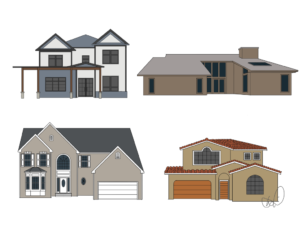It’s November! My 2023 Light Can Help Us series is nearing its end, the revisiting of my preferred language of light nearly complete. Or is it?
Long before Light Can Help You was born, I began experimenting with a new language of light, a new way to talk about why light is important and how it can help us live better lives. I began with five promises: Light can help us do better, know more, feel better, change easily…and tell our stories. Over the years I migrated away from the stories promise towards the idea that light can help us focus clearly, but language never stops evolving as long as it is in use. In more recent years, for example, I came to more deeply understand the value of beneficial darkness as the foundation of good light. Today, I think it might be good to re-introduce the promise of light that helps tell our stories.
There are plenty of commonalities between what I need and what you need when it comes to light; many of the promises are universal. Any of us with eyesight can benefit from good light, and a well-lit space for me is likely to also be a well-lit space for you. In other words, at some level, we all need the same thing. So how do we acknowledge that each of us is different?
I wear clothes, and chances are that you wear clothes, too…at least in public. We both benefit from clothing; it helps us stay warm and dry, protected from scratches, and keeps us from scaring the children. Yet beyond the baseline there is a staggering amount of variety available to those of us with privilege and means. We can wear jeans, shorts, slacks, activewear, hiking pants, insulated pants, skirts, leggings, and more…and all of this is just one of many layers of clothing we typically don each day.
I use light, and chances are that you use light too. We both benefit from light, like benefiting from clothing, and we also have an opportunity to make light for us unique. This is light that reflects our values, and in doing so it becomes light that tells our stories. And when writing a story, it helps to know the characters and the plot.

What makes you unique? What brings you joy? What is important to you? We can define ourselves in many ways: we can craft identities out of our work, our play, how we cut our hair, what we wear, and how or who we love. Our first questions to new clients are almost always open-ended getting-to-know-you questions, and their answers reveal some of what they value, some of their history, and some of their dreams. We meet farmers, bankers, schoolteachers, doctors, stay-at-home parents, retirees, children, young adults, and more. We hear about crocheting, painting, cooking, grilling, watching movies, artwork from children, rock collections, and furniture from departed family. We learn how people start their days, spend their days, and end their days. We discover clients who spend all their time with family and others who have friends over constantly. We learn, in essence, what makes our clients unique. We also learn about our clients through the homes they build.

We hear from clients building forever homes designed to allow them to age in place late in life. We hear from clients building their first homes with a strong focus on raising children. We hear from clients building vacation homes near the ocean or condos for city getaways. Our clients are building bunk rooms, wine rooms, game rooms, movie rooms, rooms for aging parents, rooms for running a business, rooms for schooling at home, rooms for making art, rooms for working out, and rooms without walls for enjoying nature.
We work on small homes, medium homes, and enormous homes. We work on homes with open floorplans and others with traditionally separated rooms. We work on modern homes, mountain homes, lake homes, farm homes, city homes, and more.
Our universal need for light transcends all of these ideas, all of these homes, all of these rooms. Our personal use of lighting can push and pull these dreams closer to fruition.

We are surrounded, when we are in our homes, by choices that reflect our values and tell our stories. We are surrounded by the faces of loved ones, in person and in photos. We walk on floors and rugs and sidestep toys under our feet. Beams, trusses, light fixtures, and skylights hang over us. Stone fireplaces, artwork, televisions, and windows with great views surround us. Could I learn something about you by sitting for a moment in your home?

Practically speaking, light that helps tell our stories is perhaps the most difficult to explain because we each have a unique story. This is where deeper creativity and artistry infuse great lighting designs with something unique, something never seen before. When we work in this squishy, undefinable area of design, we hear clients ask, “can you show us a photo of what that looks like” and have to answer “well, I don’t know if this has ever been done before….” Light that helps tell our stories comes in too many varieties to count, with new ones being dreamed every day. It may be unique fixtures, or light on unique collections, or light that changes to fit a particular mood.
I was asked recently how we could design hundreds of homes and not get bored. When we make a lighting design fit the unique humans using it, when we help tell their stories with light, there is no room for boredom.
Read more of the Light Can Help Us series HERE.
